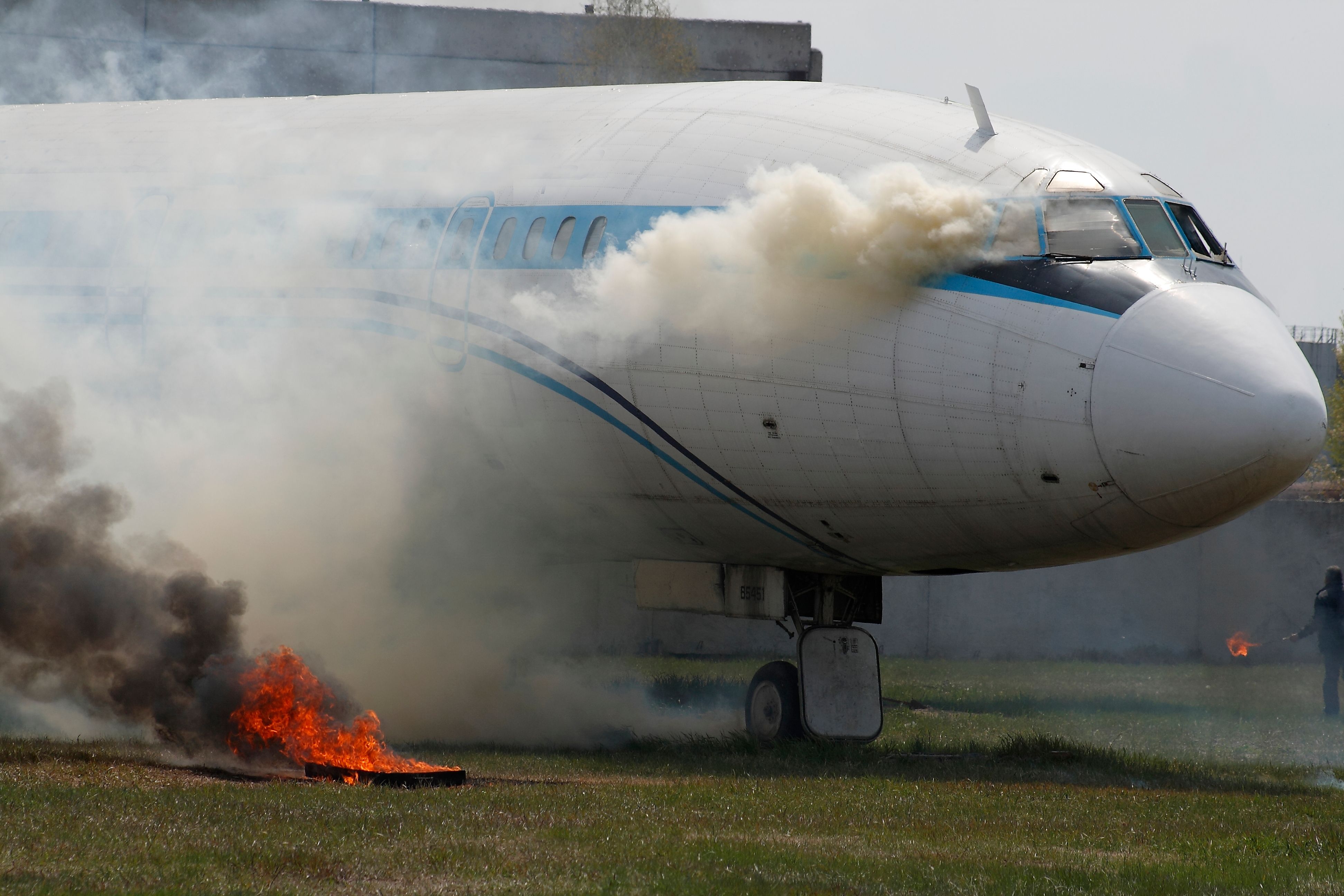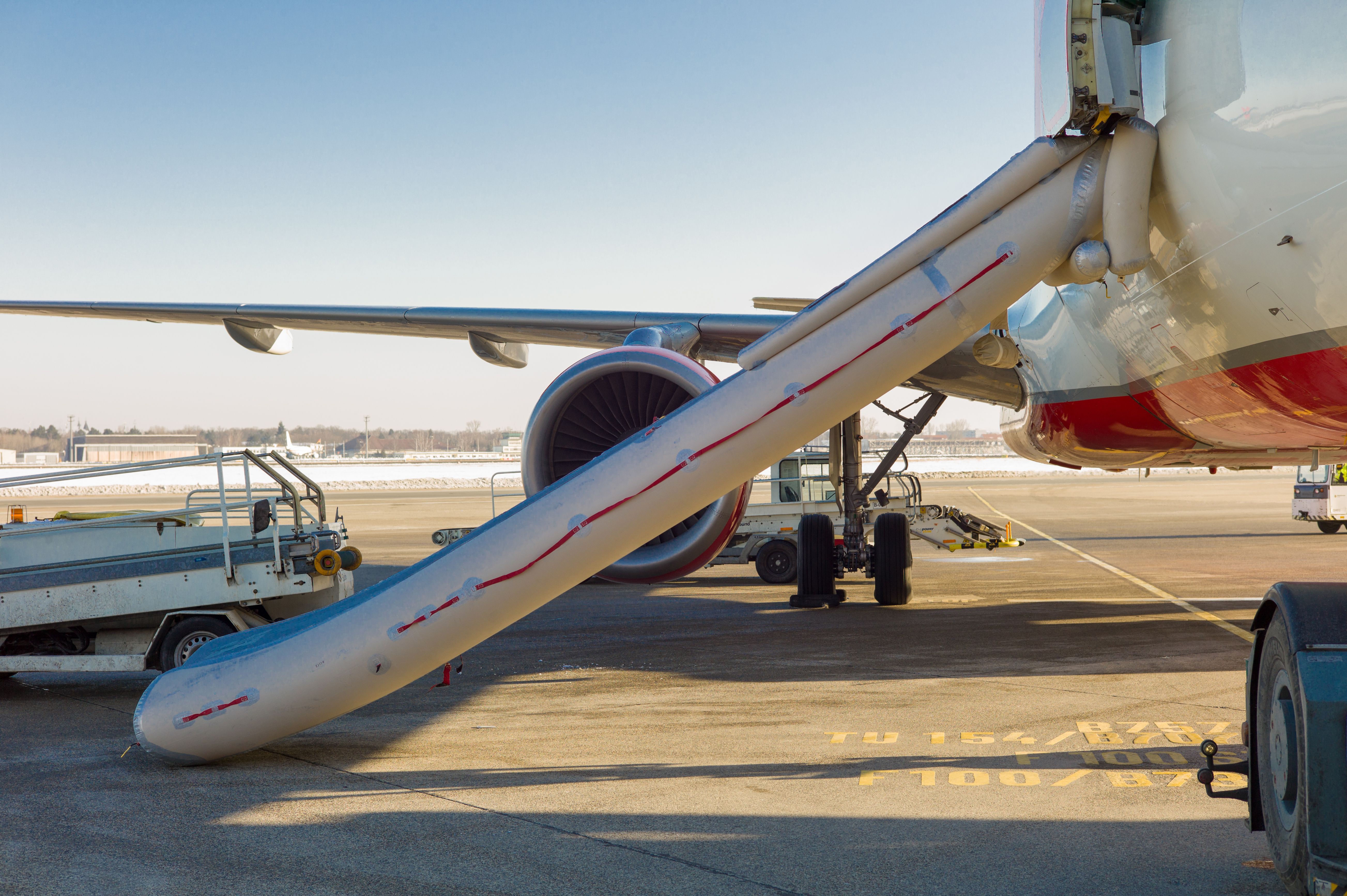Emergency scenarios are often practiced and seldom experienced. A wide range of non-normal circumstances precipitate an emergency declaration by pilots, and the severity of the circumstance influences how pilots handle the approach and landing. This article focuses on some of the generalities pilots are trained to think about during an emergency landing.
It’s helpful to conceptualize two general emergency return scenarios: Those that require immediate landings and those that allow for time to troubleshoot with QRH checklists. Pilots are taught from the outset of training that a fire, especially one that is not contained, is the most severe emergency circumstance that can occur.
For the most part, engine fires can be controlled by pulling the fire handles (which shuts off the fuel flow to the engines) and twisting the handle to fire a halon extinguishing agent to stop the fire. The same is true for auxiliary power unit and cargo fires. Cargo compartments and the APU are required to have fire extinguishing and containment systems installed.
Photo: Nail Bikbaev I Shutterstock
Electrical fires are arguably the most insidious type of fire. Responsible for accidents such as Swissair 111, electrical fires can spread quickly and can burn without as immediate detection as is true for the aforementioned systems. An electrical fire may not have a direct method for containment, so emergency checklists direct pilots to land immediately after isolating the part of the circuitry that appears to be affected by the fire.
Another scenario that might require an urgent and immediate return is a primary flight control failure. Especially if the aircraft has lost flying integrity or controllability, pilots will likely attempt to land immediately rather than fly with a hampered control system.
Land as soon as practical
“Land as soon as practical” is a term every pilot is familiar with from QRH checklists. This statement usually follows the immediate action items of an emergency checklist or after the failed system has been secured. The obvious difference between this and the previously mentioned scenarios is the immediacy of the landing instruction.
For instance, pilots might be descending towards their destination and receive a flap failure or gear unsafe indication. Both of these instances, in addition to many other scenarios, allow pilots to run troubleshooting checklists and make landing calculations before making an approach. The underpinning condition is that the plane is still completely flyable controllability it not in question.
Photo: Mario Hagen I Shutterstock
When an emergency landing is imminent, an emergency landing checklist is referenced. This checklist contains instructions on how to configure the plane’s transponder, missed approach considerations (especially in a single-engine scenario), notes for pilots to consider after landing, and other aircraft and scenario-specific guidance. Every emergency landing is declared to ATC, who have the airport fire and rescue on hand, but they are rarely needed for immediate intervention.
An evacuation
It’s up to the captain to decide whether an evacuation is warranted after landing. Evacuations are considered highly risky because of the near certainty of passenger injury. If an evacuation is warranted, a separate checklist exists that ensures pilots fully shut the aircraft down before ordering an evacuation. They also need to specify if any doors are unusable due to damage, fire, or if an engine is unable to be shut down on that side of the aircraft.
This is a general overview of emergency landing considerations. Each emergency comes with its own checklist, and the pilots’ experiences and capabilities inform how they respond. In general, emergency landings are controlled events after multiple checklists have been completed and usually don’t result in any injury or damage.





